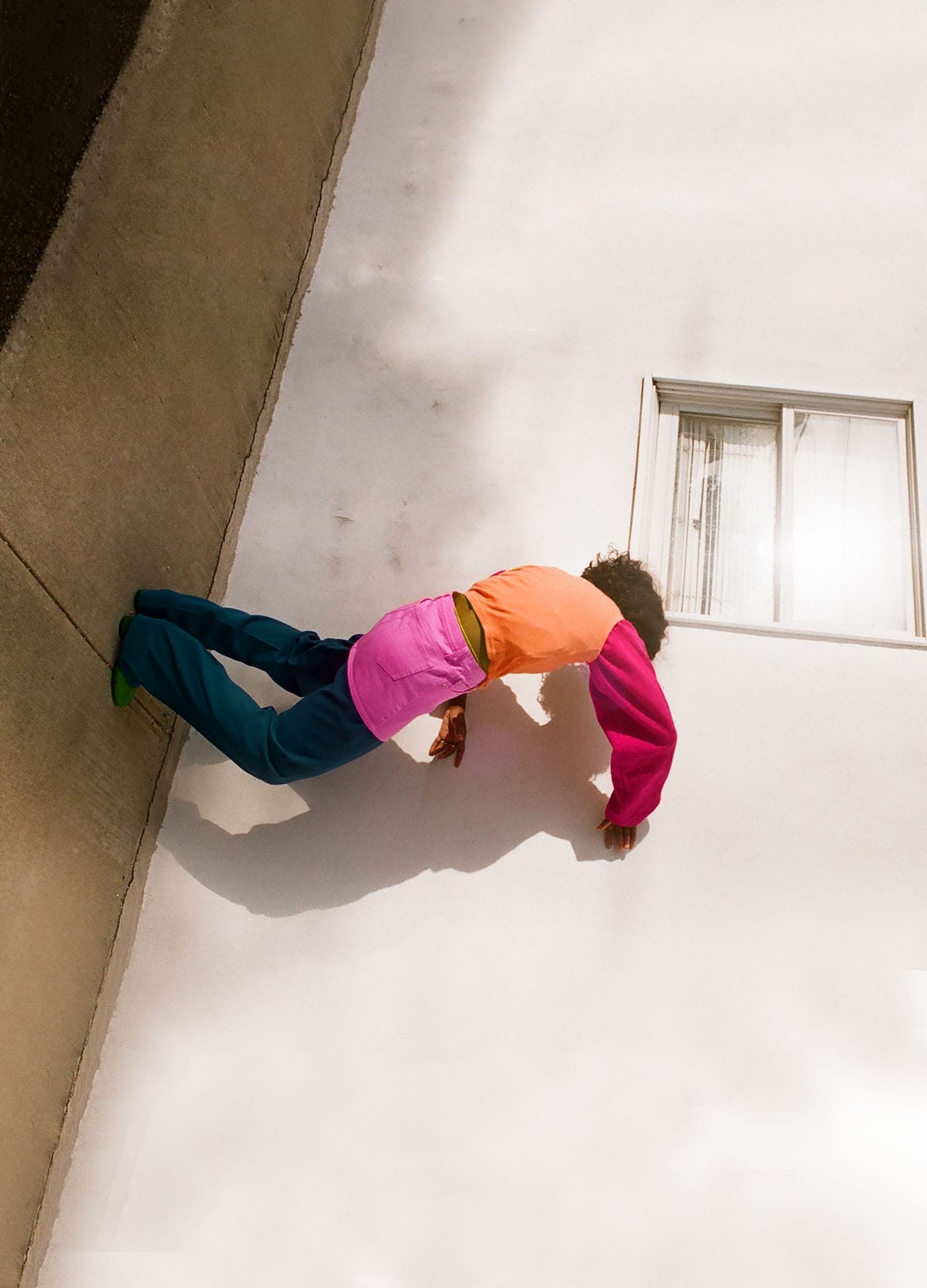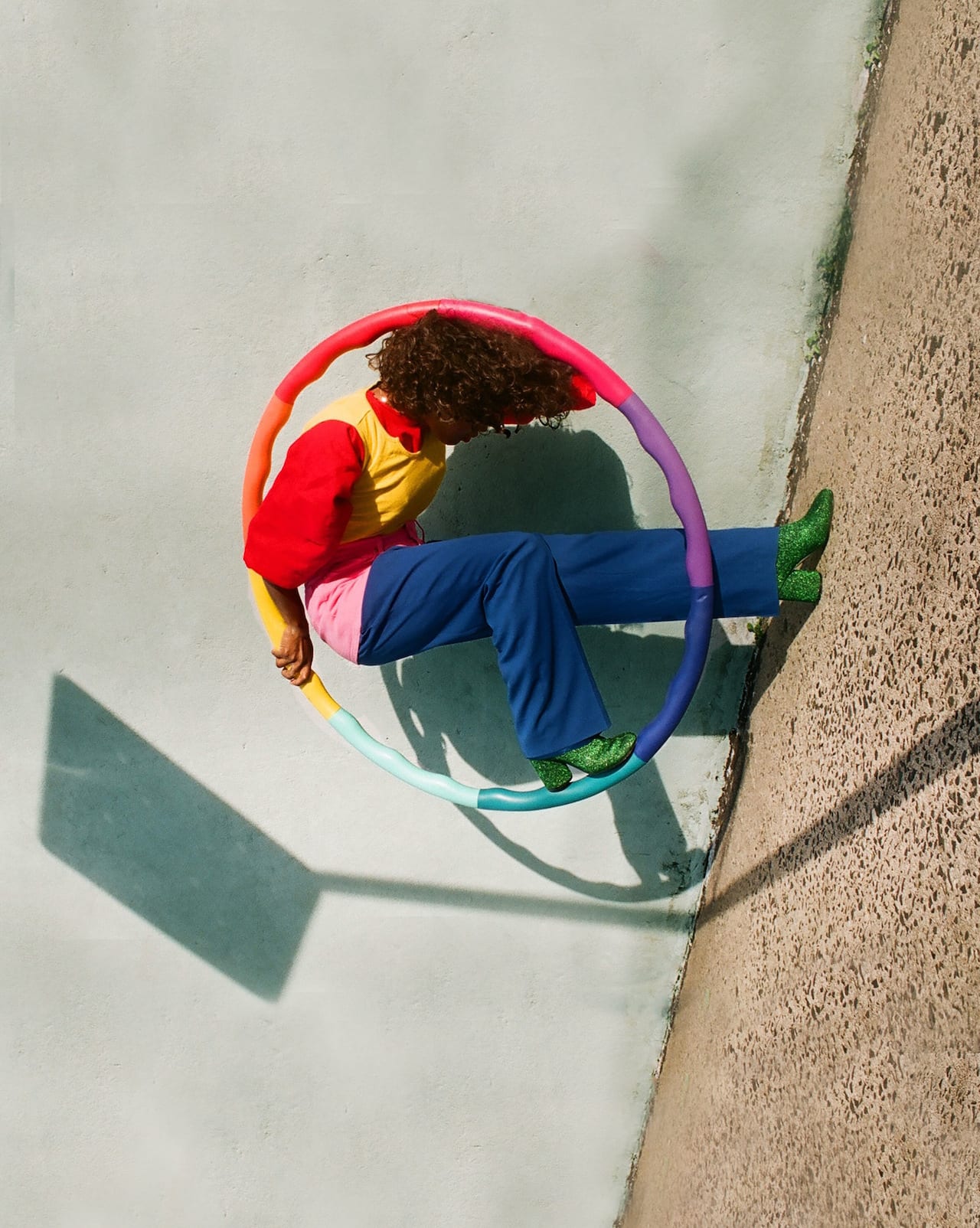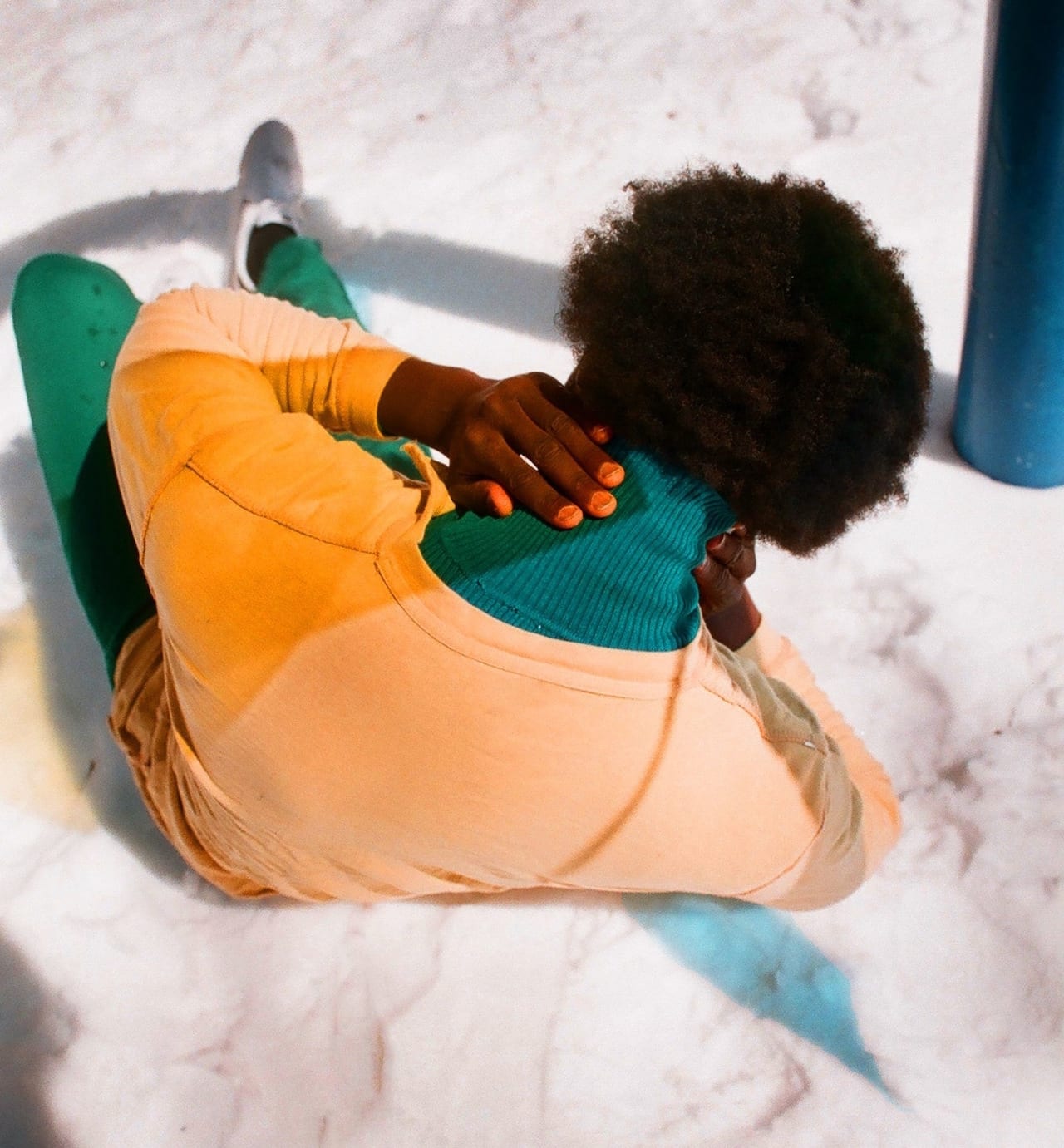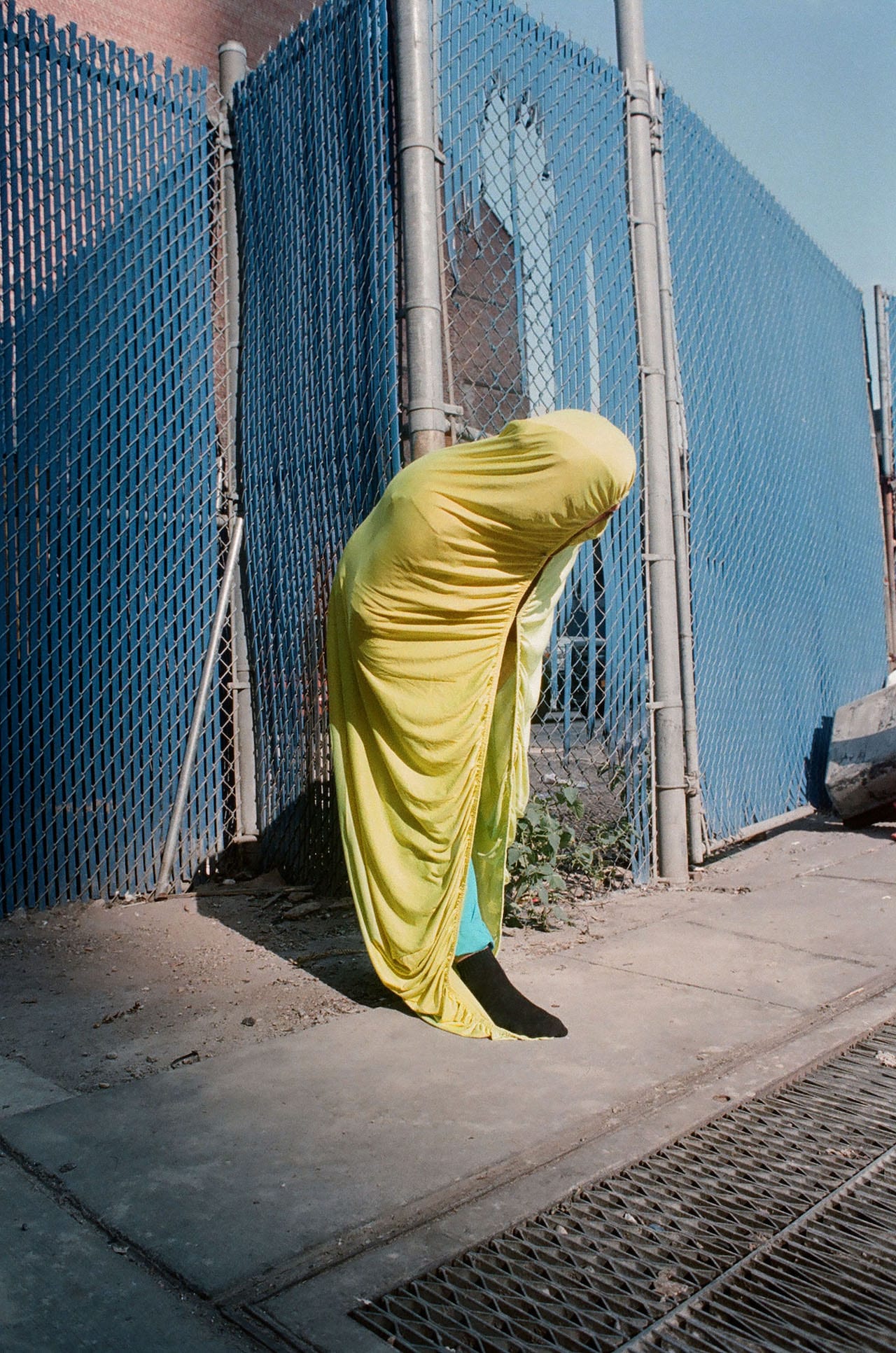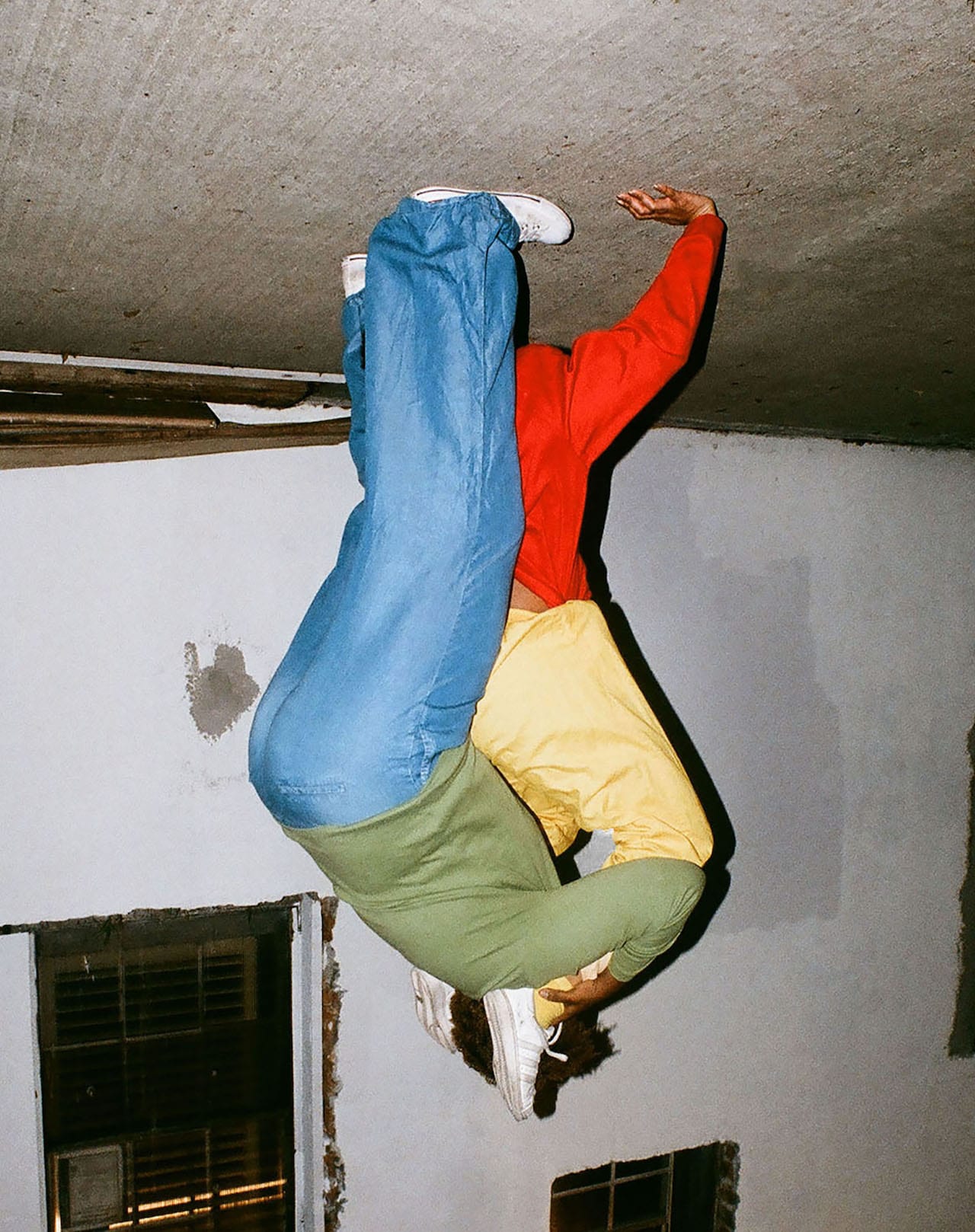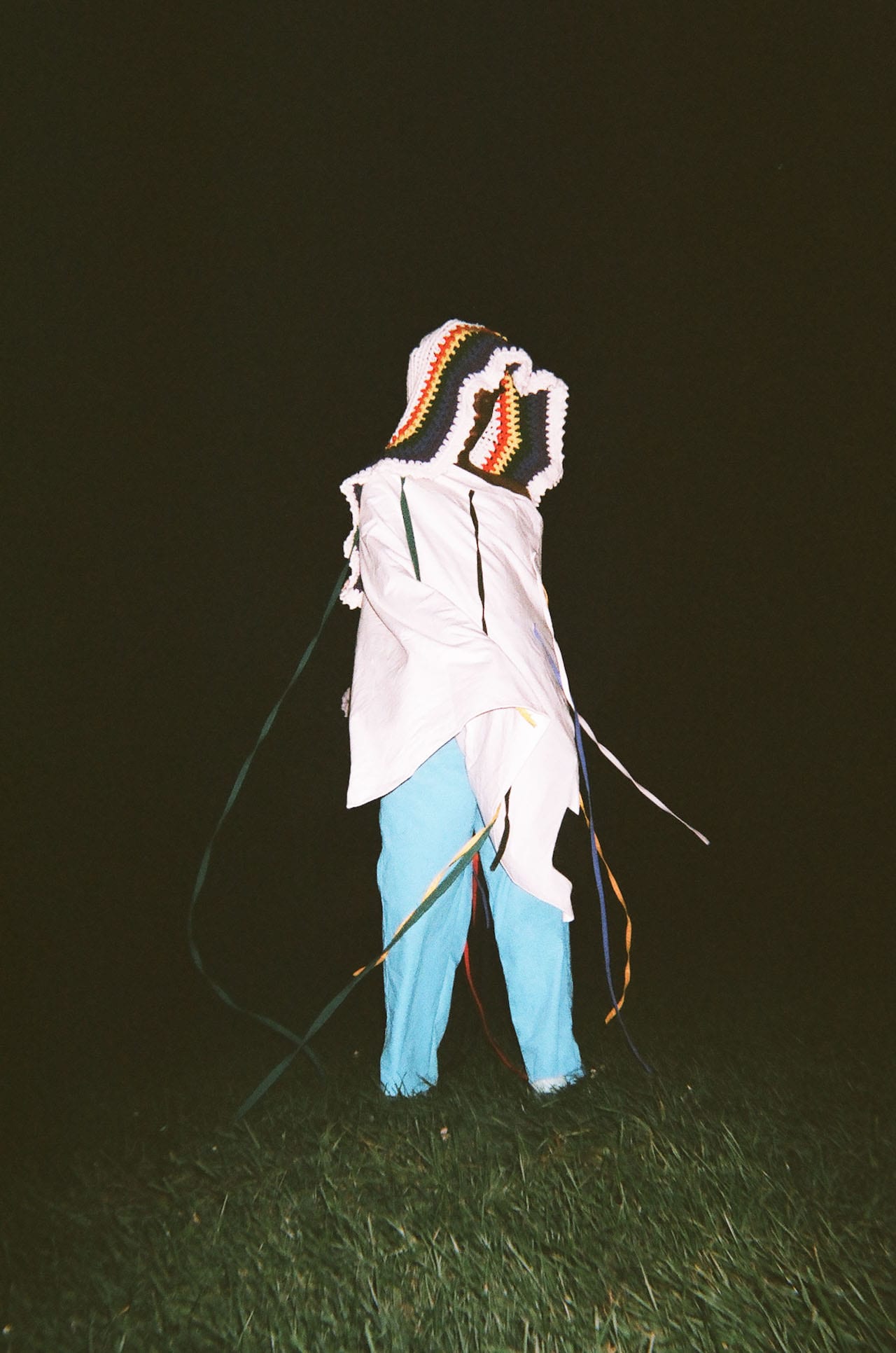“Anxiety is universal,” says Arielle Bobb-Willis. “Some people paint, others do yoga or exercise [to help manage it]. Whatever it is, everyone can find something to make them feel more present. I was just lucky to have found mine early in my life.”
At first glance, Bobb-Willis’ work is happy and lighthearted – full of colour and movement. But there is also an uneasy element to her work, in the, often faceless, models’ awkward positions. “When you dig a little deeper, you see that part of me that was in a depressive state,” says Bobb-Willis, “All the uncomfortable positions I have been in, it plays a huge role in my work.”
After her mother remarried in 2008, Bobb-Willis and her family relocated from downtown Manhattan to a rural town in Aiken, South Carolina. Transitioning from a big city to a small, “one-horse town” where any effort of self-expression was met with labels like “weird”, Bobb-Willis found herself spun into a five-year depression.
“It wasn’t a good time, and I ended up feeling really distant from myself,” she says. But at age 15, after her history teacher gave her a film camera, Bobb-Willis began to find a refuge in photography.
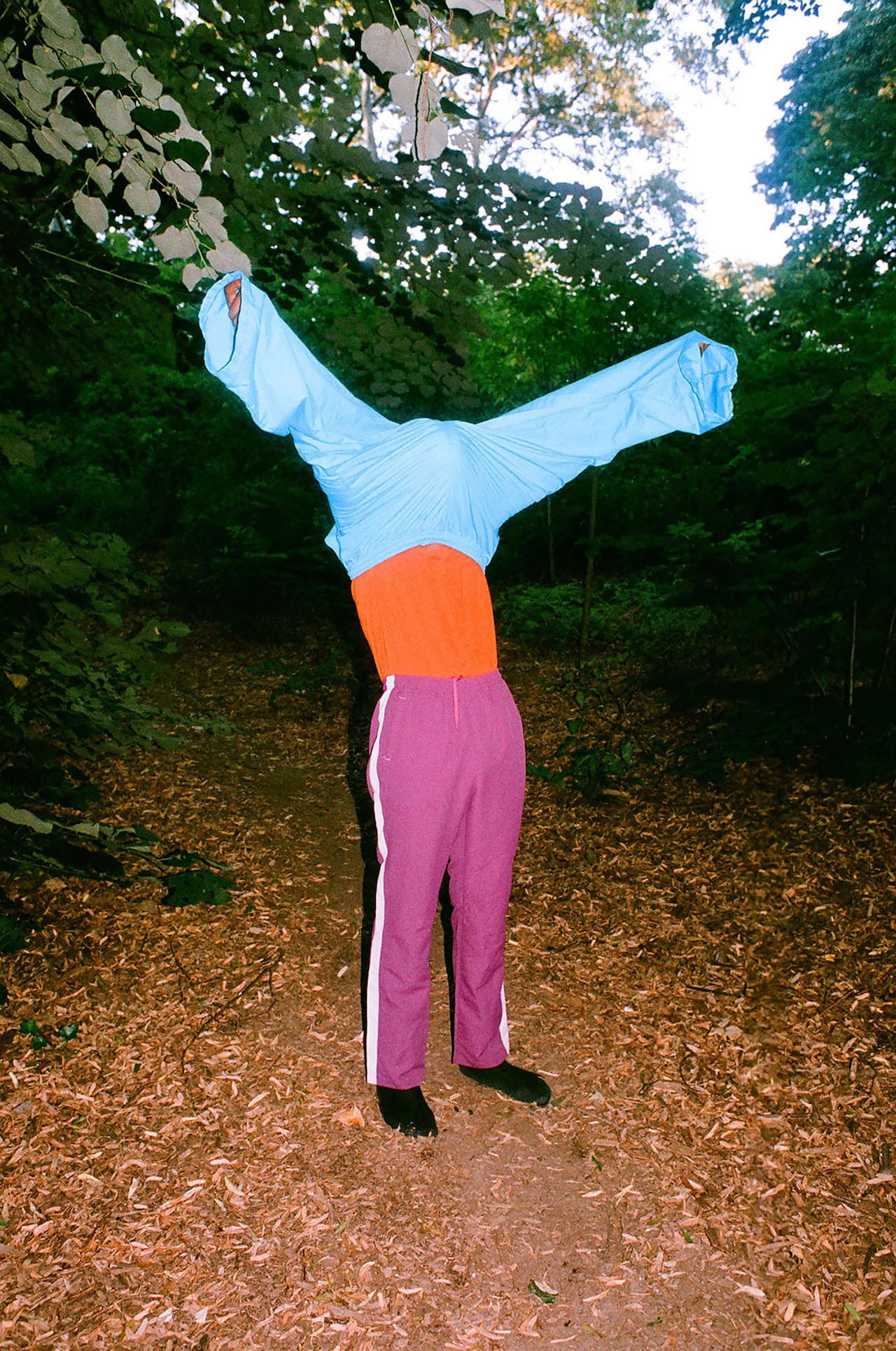
Her first muses were her younger siblings, and the bright, light-hearted drawings they would create while she was looking after them. Now, she finds inspiration in the work of Jacob Lawrence and Vincent Van Gogh, describing their paintings as “places I’d want to live in”.
“With paint, there’s no limit to what you can do with the body,” she explains. “Sometimes photography can be too real – it’s nice to look at things that are a little out of this world”.
Drawn to photography that make her question “why” or “how”, Bobb-Willis has always hoped her own work evokes a similar reaction. But the dynamic way in which she styles and photographs bodies, which is often inspired by paused videos of wrestlers and dancers, didn’t come until after a pivotal moment in her life.
In January 2016, Bobb-Willis was hit by a car while cycling, which left her bedridden for six weeks. Even so, she looks back on the accident as a blessing in disguise. “I was forced to think about what I liked, and try to get back to being myself,” she explains. “Before that, I felt like I was running away”.
For Bobb-Willis, speaking honestly about these feelings and how they relate to her work has been a form of therapy too. “People tell me they understand these feelings,” she says, “I thought I was crazy!”
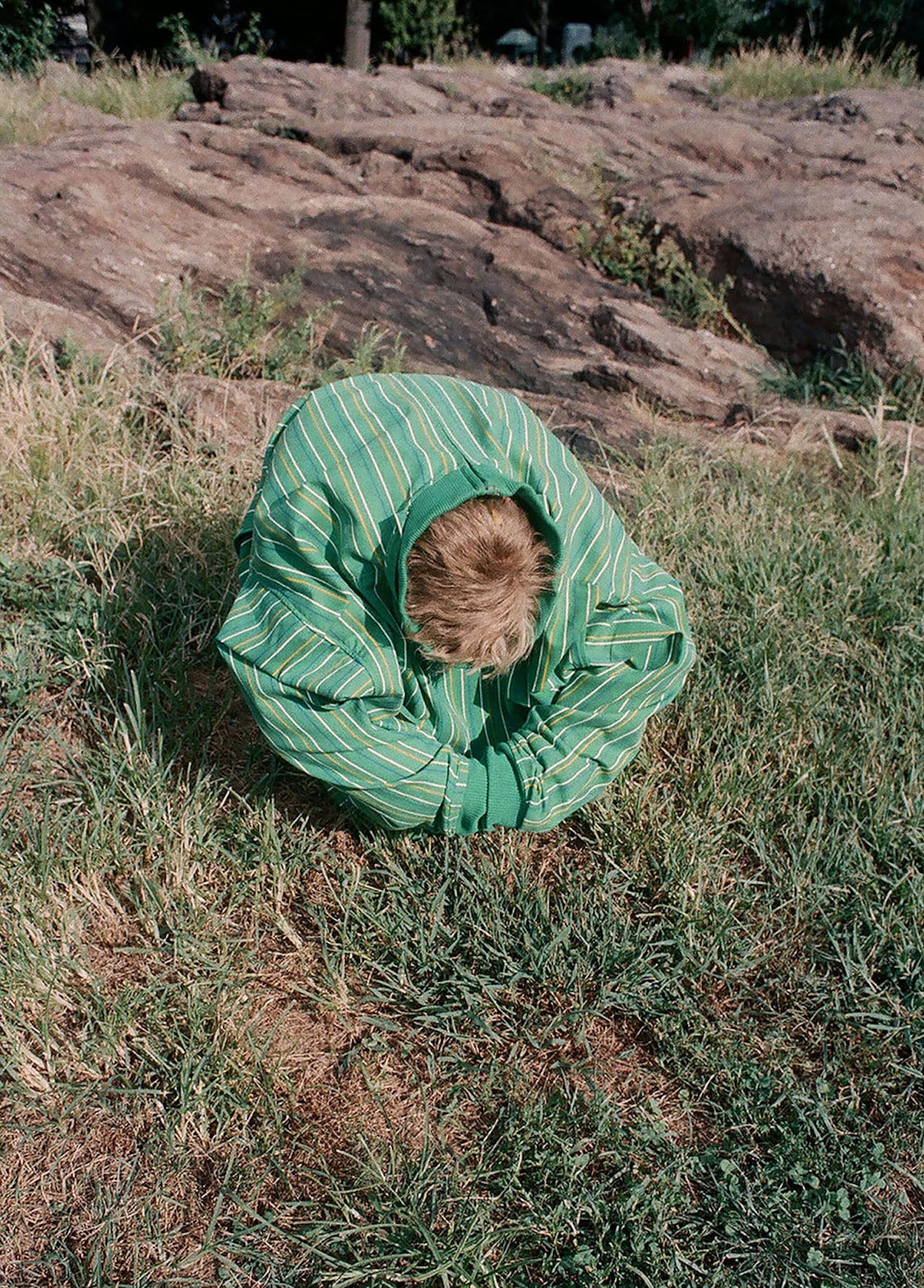
Now 24 and living back in Manhattan, Bobb-Willis has been putting her talents to use as a stylist and photographer on fashion editorials. But she describes it as a “different world” to her personal work, which is more about the final image than about presenting the clothes within them. “My work is about letting go of your ego and becoming part of the art,” she says, adding that is why a lot of her models are faceless.
Still, the giant piles of clothes in her apartment, thrifted from charity shops and 99 cent stores, may suggest otherwise. “I have more clothes for my shoots than for myself,” she laughs. “Right now, I have a huge suitcase full of old clothes, and five trash bags stacked on top of each other with shirts, pants, shoes.”
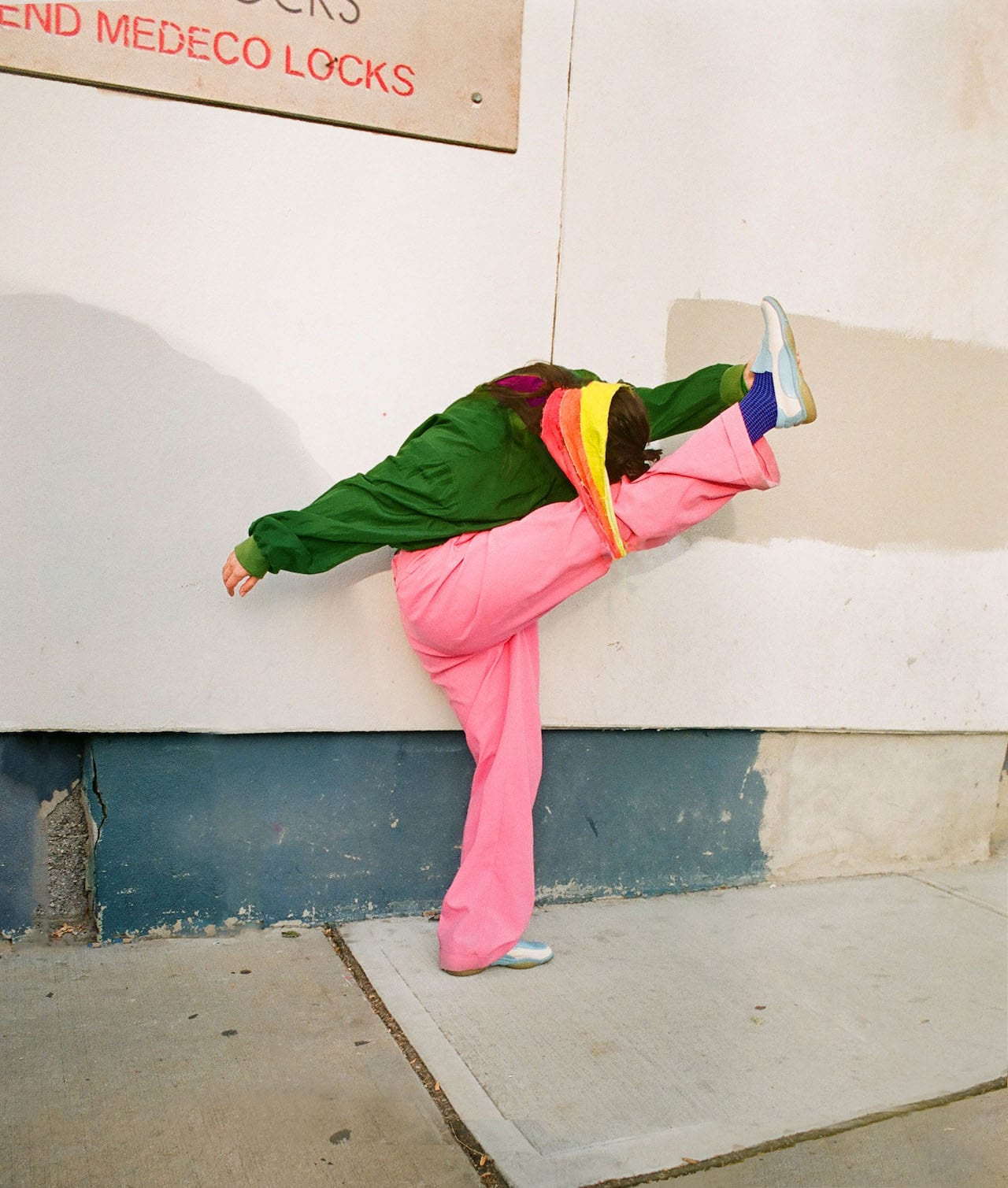
Among them are also props such as buckets, hula-hoops, paintings and bits of cardboard, which she uses to obscure faces or create more shapes. Over time, she has introduced more people into her photographs, and her work has developed into exploring her anxieties and fears around her relationships too.
Fears of “not being accepted by that one person you want to be accepted by”, and “people pushing you away and not wanting you” play a large part in her portraits of couples, Bobb-Willis says. “Photography is my therapy,” she adds. “I need it.”
